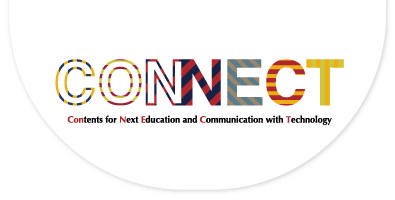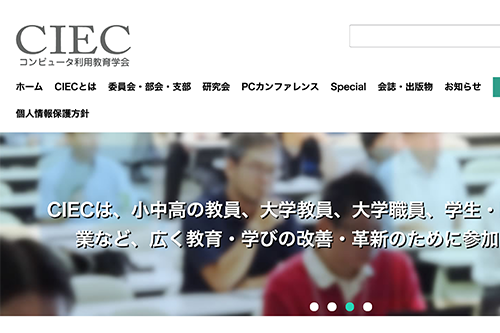TopicsTeacher Interview
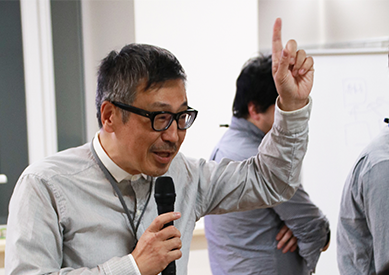
KoALA-facilitated Flipped Classroom and High School-University Articulation: Strengthening "Thinking Skills" through Critical Thinking Training
Professor Yasunaga Wakabayashi, Graduate School of Management, Kyoto University (Marketing Theory)
Dr. Yasunaga Wakabayashi of the Graduate School Management has been delivering a lecture series called "Learning How to Think: An Introduction to Critical Thinking 1-4" in KoALA* since AY 2018. While engaging himself in marketing research, Dr. Wakabayashi recognized the need to integrate ICT into education from early on. In this interview, Dr. Wakabayashi talks about the challenges of creating his lecture series on the KoALA platform and describes some of the educational practices he has tried with KoALA, such as strengthening a high school-university articulation and flipped classroom teaching.
(This interview was conducted online using Zoom)
* KoALA (Kyoto University Online for Augmented Learning Activities): An online platform provided by Kyoto University that can be used to deliver online lectures, share teaching materials, and serve as a virtual learning space. For more details, please see here.
- Profile
- Professor, Graduate School of Management, Kyoto University. Ph.D. in Economics. After working as Full-time Lecturer at the Faculty of Business Administration, Kyoto Sangyo University, and as Assistant Professor at the Graduate School of Economics, Kyoto University, he has been in his current position since 2003. He has also served as President of Kyoto University CO-OP since 2015, and as Director of the Center for Research in Business Administration, Graduate School of Management, Kyoto University, since 2018. His expertise lies in marketing theory. He is also Chairperson of TOC (Theory of Constraint) Japan, and President of CIEC (Community for Innovation of Education and learning through Computers and communication networks).
The crucial role played by "Editors" in creating online lectures in KoALA
What inspired you to create the lecture series "Learning How to Think: An Introduction to Critical Thinking"?
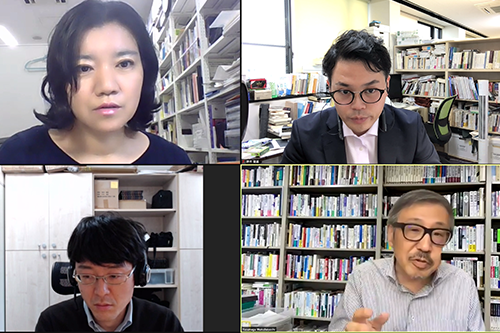
Online interview with Dr. Wakabayashi
It all started when I received an email for Kyoto University faculty members about KNOT*, which was released in the summer of 2018. After reading the message, I was particularly keen on the concept of sharing Kyoto University's educational content with high school students. I immediately wrote back to the Center for the Promotion of Excellence in Higher Education to tell my genuine interest in their endeavors. The timing was perfect as they were about to set up KoALA as the university's new initiative. So, we both agreed to collaborate in creating lectures for high school students using KoALA.
* KNOT (Kyoto University Nexus for Open education Treasure): A portal site to promote a stronger articulation between high schools and universities, released by Kyoto University on July 1, 2018. For more information, please visit here (in Japanese).
What is the reason for choosing critical thinking as the theme of the lecture series?
From my own experience in teaching and lecturing to students, I was always aware of the importance of applying critical thinking to educational settings. It was then that I came to know "TOC for Education*" as a tool to promote critical thinking skills. I had a hunch that this would be an excellent approach for students, so I tried it out in my lectures. Surprisingly, many of the students had never been through critical thinking training before, and they found it very effective.
* TOC (Theory of Constraint) for Education: TOC for Education is a set of three logical thinking tools: "BRANCH" to identify cause-effect links between actions and consequences, "CLOUD" to resolve internal and external conflicts, and "AMBITIOUS TARGET TREE" to analyze the steps needed to achieve goals. TOC is being used in educational settings in more than 20 countries around the world. For more information, please click here (link to the "TOC for Education Japan" website, in Japanese).
What did you find was particularly challenging for you in creating lectures in KoALA?
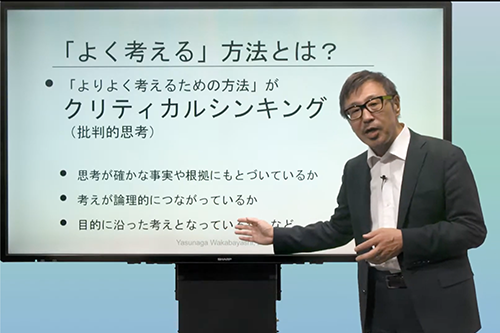
Dr. Wakabayashi's lecture streamed online in KoALA.
Some of the slides used in his lectures are downloadable from here (in Japanese).
I would say the most challenging part was to make near-perfect presentation slides, as I assumed that the slides used in the KoALA lectures would eventually be widely available on the Internet. Under pressure, I spent plenty of time carefully checking the overall structure and flow of my slides, including the diagrams and wording of each slide.
Recording lectures in a studio must have been a whole new experience for you. How did it go?
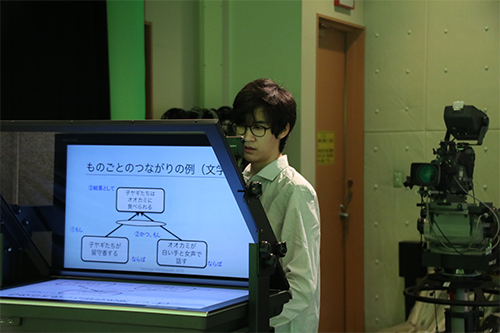
Prompter used in the lectures
With the help of my elaborated slides, I didn't feel too awkward to speak in the studio. This time, I didn't make a script for the lectures because I thought I would be able to speak in confidence if I made perfect slides. In the studio, a prompter (a manuscript display device used in speeches and broadcasts) projected my slides, so I could look up and talk straight during the recording.
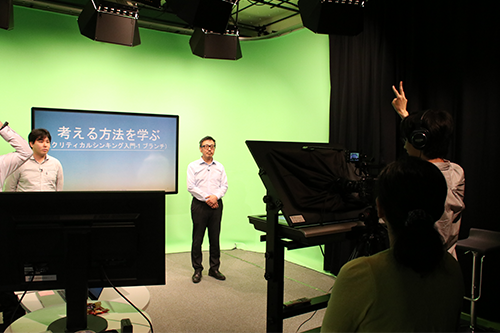
Dr. Wakabayashi was relaxed throughout the recording.
During the recording of KoALA lectures, content specialists from the Center for the Promotion of Excellence higher education were there to supervise the recording and give me some feedback in between and after the recording. They were really encouraging. I was able to enjoy recording in the studio, even in the absence of students.
What was the test making like with KoALA?
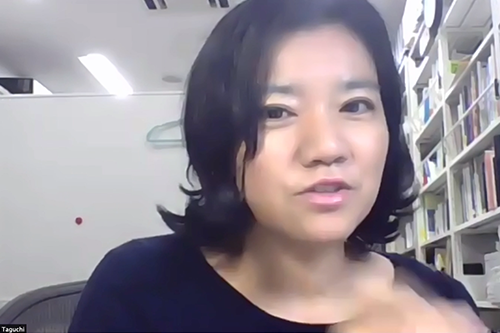
Interviewer: Dr. Mana Taguchi, Associate Professor, Center for the Promotion of Excellence in Higher Education
In my regular classes, I give students essay questions. With the KoALA platform, however, I had to make multiple-choice and ordering questions with single correct answers in order to have them automatically graded by the system. Honestly, I had never made questions in this format before, so it took a long time to thoroughly check that each question had a clear and correct answer.
What was the most impressive part of the creation process?
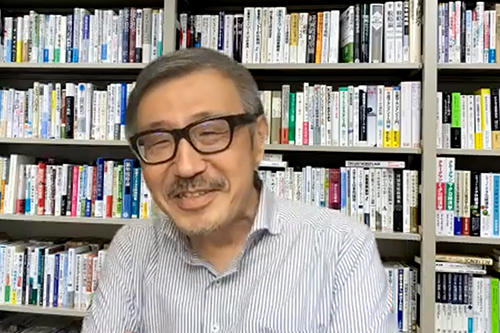
Dr. Wakabayashi comments that he was happy to receive feedback during the creation of lectures with KoALA.
What impressed me the most was that some faculty members from the production crew of the Center carefully reviewed my slides and gave me some feedback on how to improve them. I also received insightful comments and advice for making questions.
While appreciating my original ideas, the Center's staff took considerable time and effort to improve my slides to make them easier and clearer to understand. In a sense, they played the role of "editors" in the creation of this lecture series.
The metaphor of "editors" is very unique. Indeed, one of the key features of KoALA is that you can get advice from education experts when needed.
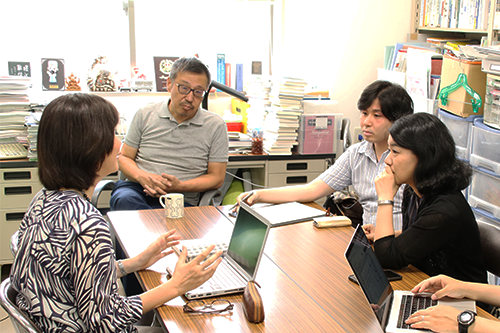
A meeting between Dr. Wakabayashi and staff from the Center for the Promotion of Excellence in Higher Education held during the creation of KoALA.
That's right. Recently, with the rise of YouTube, it is becoming a common practice for creators to publish their videos without a third party's involvement. This trend itself represents a remarkable technological advancement, but at the same time, I wonder if it is okay to eliminate editorial checks from the production process.
The creation process of Dr. Wakabayashi's lectures in KoALA is also introduced in the following pages (in Japanese).
- KoALA Creation Documentary:The creation process of KoALA is described in documentary format, with Dr. Wakabayashi's case as an example.
- An Illustrated Guide to KoALA:A visual guide for instructors to learn what to prepare for delivering lectures in KoALA, with Prof. Wakabayashi's case as an example.
- Guidelines for Creating Lectures in KoALA for High School and University Articulation:Tips on what to wear when recording videos, how to make slides and handle copyrights, and what to keep in mind when making questions.
KoALA-based workshop and special lecture for strengthening high school and university articulation
What activities did you do in the KoALA-based workshop for high school students ("KoALArner Workshop*") held in April 2019?
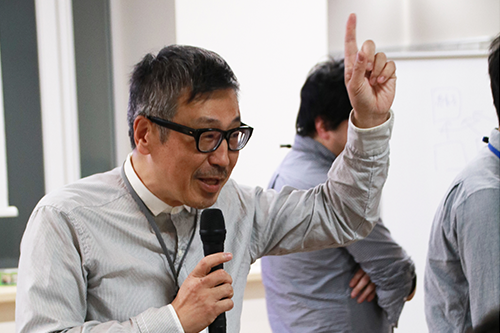
Before attending the workshop, students were asked to watch the KoALA lecture as a pre-workshop assignment. In the workshop, they were divided into groups to discuss a given topic by applying the BRANCH tool (drawing logical diagrams to identify cause-effect links) that they learned in the video lecture.
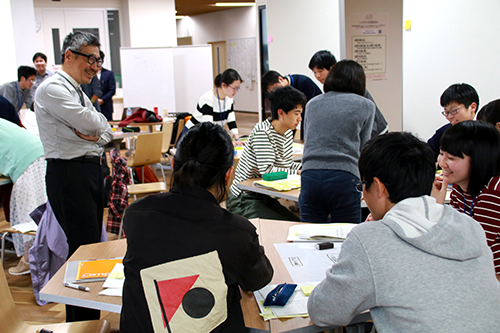
A photo from the "KoALArner Workshop." During the group work, Dr. Wakabayashi went around to each group and gave advice enthusiastically.
The only regret I have is that the high school students and I were a little nervous and shy at the beginning. We should try more effective icebreakers next time.
* KoALArner Workshop for High School Students: A workshop designed for high school students using the KoALA platform, held at Kyoto University on Sunday, April 14, 2019.
How did you utilize KoALA in ELCAS*, an experiential learning course for high school students?
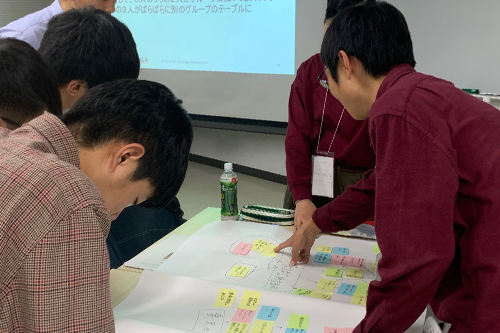
Group discussion in ELCAS held in AY 2019 (photo provided by Dr. Wakabayashi)
My previous experience teaching at the KoALArner Workshop gave me a rough idea of what the ELCAS lecture for high school students would be like. Additionally, the lecture was held in "flipped classroom" format, in which students registered for KoALA and took my video lectures in advance as a preliminary assignment. In class, they worked in groups to discuss and exchange ideas based on what they learned in KoALA.
* ELCAS (Experience-based Learning Course for Active Students): Kyoto University's intellectual human resource development program designed for high school students to strengthen the articulation between high school and university.
KoALA for the flipped classroom
You are also using KoALA as a teaching resource for the flipped classroom of your first-year undergraduate course. Have you seen any changes in your students since you incorporated KoALA in your teaching?
You are referring to the ILAS seminar "Let's Learn and Practice 'Thinking Tools.'" I have been teaching this couse since before KoALA was launched. With the introduction of KoALA to support students' pre-class studies, students can now prepare more thoroughly than before. As a result, the atmosphere of the class has changed drastically.
Group work allows students to collaborate and deepen their understanding of each other, which is possible only in a classroom. If the teacher talks too much during class time, there will not be enough time for group work. In this respect, I am very positive that the introduction of flipped classroom teaching has made the class flow much smoother, and as a result, students are more engaged in discussions on a deep and critical level.
Giving immediate in-class feedback in the flipped classroom
Did your experience with KoALA motivate you to start flipped class teaching?
In fact, in the "Marketing" course I have been teaching at the Graduate School of Management, I have been taking a format similar to flipped classroom teaching since 2006. Unlike KoALA, though, videos are not available, but I ask the students to study the textbook by themselves ahead of the class and write a report on each assignment. In class, I mainly ask questions and make comments on the students' presentations.
Since you are teaching in graduate school, you can have graduate students read the textbooks and work on assignments on their own. Do you give the same kind of lectures in the Faculty of Economics?
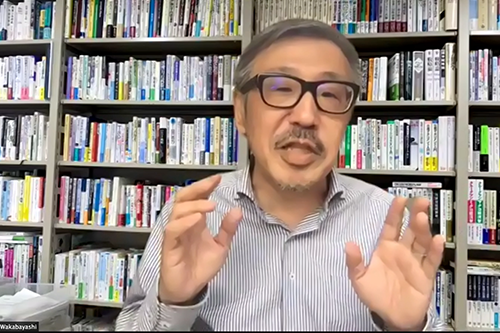
I think it would be extremely hard for undergraduates to suddenly enter into discussions with only self-study in advance. Therefore, in the "Marketing 1" course for sophomores in the Faculty of Economics, which I started teaching this year, I use a flipped-classroom approach. Students are asked to watch a 20-minute pre-lecture video and summarize the textbook before each class meeting.
You collect mini-reports and give feedback during class time?
I do. Group work can be effective if the teacher listens to the students' presentations after working in groups and gives them appropriate feedback on the spot. I see that not many students have the opportunity to receive direct feedback from their teachers during class. Teachers must manage the class flow well, including the time for feedback. Otherwise, the meaning of group work and discussions may be lost.
Therefore, I decided to move the lecture part outside of the live classroom by taking a flipped-classroom approach. This way, during the live classroom session, I can collect reports, select some of them, and give feedback on the spot. Reducing the teacher's workload is also an important aspect when designing classes.
As long as I see myself as an educator, I will do my best.
You are also the President of CIEC (Computer Information and Computer Education Society). Have you been involved in ICT education before?
I am not an expert on educational technology or ICT education, but as an individual and an educator, I have long been interested in education and learning that take advantage of advanced digital technologies, such as PCs and the Internet. Some time ago, I heard one of the researchers I knew was starting a new academic society called CIEC to promote innovation in computer-based education, so I helped its launch. I have been working with CIEC since then.
You have tried many different educational practices. What makes you so passionate about education?
I am a little hesitant when people ask me if I am passionate about education. Like many other faculty members, I did not become a university faculty because I was interested in teaching. It's vice versa. I became a university faculty, and education just naturally came along with it.
Education is like watering a desert, as I don't know if I will be rewarded in a tangible way for my efforts. Nevertheless, with a burning sense of responsibility for education, I can drive myself to constantly search for better ways to teach for the benefit of students.
Lastly, do you have any future plans or goals for the KoALA lecture?
I am happy that so many people have watched my KoALA lecture videos. One of the rewarding aspects of creating the KoALA lecture series has been that many students said they would apply the critical thinking tools they learned in the class to their real lives, thinking, and learning. I hope they will continue to maximize the "critical thinking" skills they acquired in this lecture to enrich their lives.
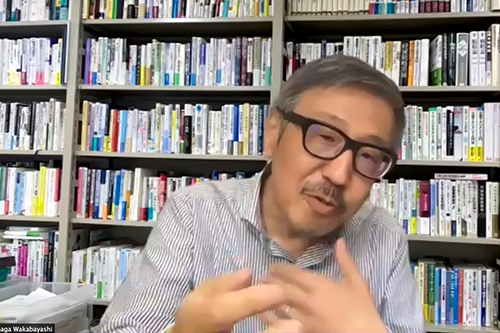
Dr. Wakabayashi concludes by saying that he hopes students develop and utilize their "critical thinking" skills in order to enrich their lives.
Thank you very much for your time today.
Thank you very much.
(Interviewer: Mana Taguchi/ Text: Tetsuro Nagaoka/ Photography: Takeo Suzuki/ Interview date: May 12, 2021 / Publication date of this article: April 21, 2022)
